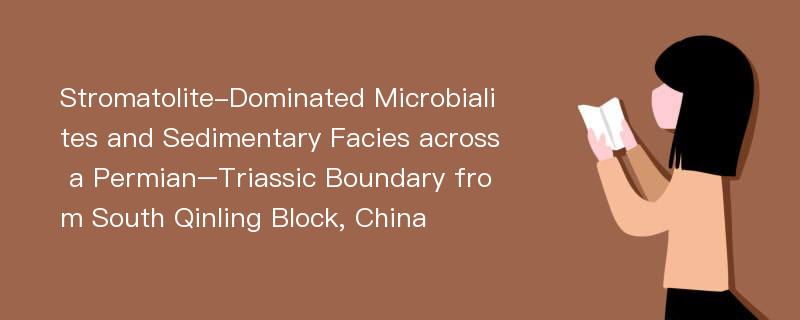
论文摘要
Permian–Triassic boundary microbialites(PTBMs) are organosedimentary carbonates formed immediately after the end-Permian mass extinction.All those reported PTBMs constrained by convincing conodont biozones are present stratigraphycally not higher than the Hindeodus parvus zone and mostly dominated by thrombolites.Here we provide the first record of a brief, but spectacular development of stromatolite-dominated PTBMs within the basal Isarcicella isarcica conodont zone of the earliest Triassic from the Xikou section of South Qinling Block, China.The Late Permian sequence of the Xikou section is composed of reef sponge framestones and inter-reef crinoid grainstones.Capping them is a set of oolites, with the thickness increasing from 0.25 m on the reef top to 2.1 m on the inter-reef sequence.Overlying the oolitic layer is a micritic dolostone bed with a thickness of 0.2 to 1.2 m.A stromatolite-dominated microbialite unit lies on the dolostone, capped by thin-bedded lime mudstones.The microbialites developed on inter-reef sequence have smaller thicknesses and contain mudstone intercalations, while those on reefs have greater thicknesses and bear no mudstone interbeddings.These microbialites mainly consist of columnar, domical or wavy stromatolites, with minor thrombolites on the topmost in inter-reef facies.At the microscopic scale, laminoid structures in stromatolites comprise wavy, millimetricdomical and tangled laminae.The increased grain and fossil contents and/or bioturbation in the domical and tangled laminae indicate that the formation of these laminae is likely related to an increase in the populations and the disruptions by benthic metazoans, as well as an influx of sediment grains.The stratigraphic succession from stromatolites to thrombolites of the PTBMs may represent a transgressive succession and/or a transient ecosystem recovery immediately after the end-Permian mass extinction.The thrombolite-dominated PTBMs mainly developed in near-equator shallow marine geographic locations, and stromatolite-dominated PTBMs mainly developed in higher latitude settings, which probably indicates that a relatively lower diversity and abundance of marine benthic metazoans existed at higher latitudes after the end-Permian mass extinction.
论文目录
文章来源
类型: 国际会议
作者: Quanfeng ZHENG,Xiyang ZHANG,Dongxun YUAN
来源: 第一届亚洲古生物学大会—暨中国古生物学会成立90周年纪念 2019-11-17
年度: 2019
分类: 基础科学
专业: 生物学,地质学
单位: State Key Laboratory of Palaeobiology and Stratigraphy, Nanjing Institute of Geology and Palaeontology and Center for Excellence in Life and Paleoenvironment, Chinese Academy of SciencesCAS Key Laboratory of Ocean and Marginal Sea Geology, South China Sea Institute of Oceanology, Chinese Academy of Sciences
分类号: Q911
页码: 79
总页数: 1
文件大小: 222k
下载量: 1
